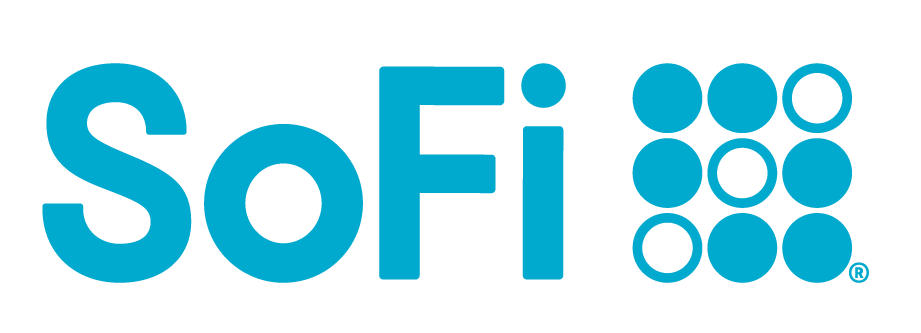FAQ: What Is the Bank Overdraft Fees Law and How Does Overdraft Work?
Many or all of the products featured here are from our partners who compensate us. This influences which products we write about and where and how the product appears on a page. However, this does not influence our evaluations. Our opinions are our own. Here is a list of our partners and here's how we make money.
When customers attempt a debit card or ATM transaction but don’t have enough money in their account, the bank can either process or reject the overdrawing transaction. Overdraft laws help determine which of those two things happens, and if the bank can charge you fees.
Below, you’ll find an explanation of the laws governing how banks can run overdraft coverage programs as well as answers to common questions about how overdraft fees work and overdraft protection rules.
» MORE: Best banks for overdrafts
Proposed changes for overdraft fees
The Consumer Financial Protection Bureau proposed a rule in early 2024 to mitigate excessive overdraft fees. This rule is part of President Joe Biden's government initiative to reduce the number of so-called junk fees — hidden fees that are attached to goods and services — that consumers may face. Under the proposed rule, banks that have overdraft lines of credit would be required to comply with lending laws, including clear disclosures about interest rates. The rule would also create much lower overdraft fees, which in recent years have been higher than $30 per overdraft. The CFPB is proposing benchmark fees of $3, $6, $7 or $14 and is seeking comment from banks about the appropriate amount based on costs to the bank rather than bringing in profit through overdraft fees. If the proposed rule passes, it will go into effect in October 2025.
What is the bank overdraft fees law?
The overdraft protection law stops banks from automatically enrolling customers in overdraft coverage.
In 2010, the Federal Reserve declared that by default, a bank must reject transactions if an account lacks sufficient funds. However, customers can opt in to overdraft coverage if their bank offers the service. If a customer opts in, their transactions would be approved, but the bank could charge fees.
The law only applies to transactions that are not pre-authorized, such as ATM withdrawals and debit card transactions. Pre-authorized withdrawals, such as automatic bill payments and checks, do not fall under the umbrella of the overdraft protection law and can lead to overdraft charges (also called a nonsufficient fund fee, insufficient fund fee or NSF fee).
Are overdraft fees legal?
It is legal for financial institutions to charge overdraft fees when there isn’t enough money in a bank account to cover a transaction. However, some transactions (such as those using a debit card) require that the account holder has opted into overdraft coverage before they can be charged. If the account holder doesn’t opt in to overdraft coverage (i.e., agree to pay overdraft fees for certain transactions), the financial institution cannot legally charge overdraft fees for those transactions. Instead, the institution would decline the transaction.
» Don’t miss: How to avoid overdraft fees
What is the Overdraft Protection Act of 2021?
The Overdraft Protection Act of 2021 is a bill that makes it illegal for banks to be deceptive or unfair about their overdraft coverage. Banks are required to provide information about overdraft coverage fees, whether a transaction could be declined if there are insufficient funds, and whether a fee will be charged for a declined transaction.
According to the bill, a financial institution must provide prompt notification about an account’s overdraft status . Also, banks cannot charge overdraft fees that are excessive or expensive; the fees must be “reasonable” and are limited in the number of times they can be charged. This means no more than one overdraft coverage fee per month and six per year, per account, by the terms of the proposed bank overdraft fees law.
When the overdraft amounts and overdraft coverage fees are paid according to the overdraft coverage program, the Overdraft Protection Act of 2021 would prohibit a bank from reporting negative information to reporting agencies about consumers’ use of overdraft coverage. As of this writing, the bill hasn’t passed in the House or the Senate.

Member FDIC
Discover® Cashback Debit

N/A
$0

Member FDIC
Chase Total Checking®

N/A
$12

Deposits are FDIC Insured
Chime Checking Account

N/A
$0
What else you need to know about overdrafts
Is overdraft coverage required?
Overdraft coverage is optional. Your bank may offer overdraft coverage for debit and ATM transactions, but you don't have to accept it. If you don’t opt in to overdraft coverage, ATM and debit card transactions will be declined by your bank if there's not enough money in your account to cover them, and you won’t be charged a fee.
What is 'overdraft protection' vs. 'overdraft coverage'?
Overdraft coverage allows banks to process transactions when customers have insufficient funds. Banks have usually charged a fee of $30-$35 for each of these transactions. But recently, an increasing number of institutions have reduced or eliminated overdraft fees.
Overdraft protection is a bank service that links a checking account with a line of credit, savings account or credit card to prevent an overdraft. If you opt in to an overdraft protection program, you give the bank permission to process an insufficient funds transaction and transfer funds from the linked account in to your checking account to pay for the transaction. The account wouldn’t go negative, so there wouldn’t be an overdraft fee. But that doesn’t mean that this scenario would be free.
While fewer and fewer banks charge a fee for this transfer service, some institutions still do — often around $10 each day a transfer is made.
For overdraft protection to work, you need sufficient money in your savings account or qualify for a line of credit.
How many overdraft options are there?
Customers generally have three choices when it comes to overdrafts:
Opt in to overdraft coverage and agree to pay an overdraft fee. Overdraft fees, usually around $30-$35, are for transactions that result in a negative account balance. If there are multiple transactions, the bank may charge multiple fees. For example, with a $35 fee, three overdrafts in one day could result in fees that total $105.
Opt in to an overdraft protection plan. With this option, you are opting in to overdraft coverage and also opting in to overdraft protection, which links your checking account to a backup savings account, credit card or line of credit. For transactions that would overdraw the checking account, the bank will transfer money from the backup account or line of credit to the checking account to prevent an overdraft. You might have to pay for overdraft protection transfers; some banks and credit unions charge for these transfers, but some don’t.
Choose to opt out of all overdraft programs. This is the default setting when a bank account is opened. With this option, if the account lacks sufficient funds, debit card transactions are declined by the merchant and ATM withdrawals are declined by the institution. No fee is incurred by these rejections. If a bank does pay for these kinds of transactions and your account is overdrawn as a result, it can’t charge you an overdraft fee.
Why do banks charge overdraft fees?
Financial institutions charge overdraft fees for the service of paying for a transaction that costs more than the amount of funds available in an account; in other words, the bank is loaning you money without charging interest. Sometimes an overdraft fee is called a “courtesy pay” fee.
Learn more about overdraft fees:
On a similar note...
Find a better savings account
See NerdWallet's picks for the best high-yield online savings accounts.
⏰ Limited-time offer
$0
0.50%
With $0 min. balance for APY
$300
Limited-time offer
Earn up to $300 with direct deposit. Terms apply.









